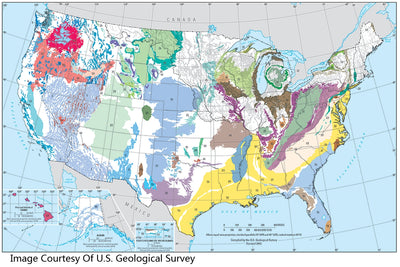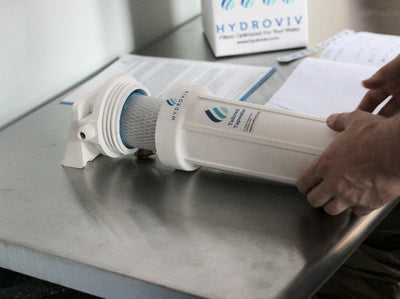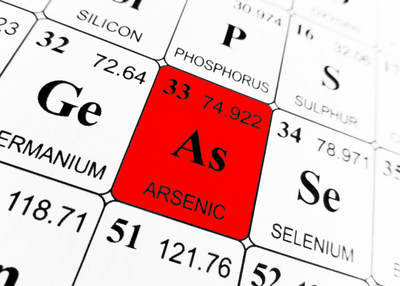Water Quality InformationWritten By Actual Experts
RSSProblems We Found In San José , California Drinking Water

What You Need To Know About Groundwater

Analies Dyjak | Hydroviv Policy Analyst
Updated 3/13/2024
What Is Groundwater?
Groundwater is submerged water located among soils, cracks and pores, beneath the surface of the earth. Groundwater travels down a gradient through geological formations and is stored in aquifers. Aquifers act as holding tanks for readily available drinking water. Rain patterns, hydrology, and ice/snow melt are the primary factors that affect how quickly a groundwater supply is replenished, also known as recharge. The recharge rate is how quickly aquifers are able to replenish the groundwater level after an influx of water.
Why Is Groundwater So Important?
It’s simple: It supplies drinking water to millions of Americans whose municipalities draw from groundwater sources (e.g. Miami, Tucson, Lincoln), as well as the 15% of people living in the U.S that use private wells as their drinking water source. In fact, the US Geological Survey estimates that 140 million people, or about 40% of the nation's population get their drinking water from groundwater sources, which include both municipal (city) water and private wells. Groundwater is also a major supplier of surface water in oceans, lakes, streams, ponds and wetlands. Crucial habitats and ecosystems are dependent on an influx of healthy groundwater, as well as surface water for public drinking water usage.
How Can Groundwater Become Polluted?
There are two major ways that groundwater can accumulate toxic chemicals:
- Natural-occurring chemicals: In some regions of the country, things like arsenic, radium, and uranium are naturally found in the rocks that come in contact with groundwater.
- Man-made Pollution: Groundwater can also become contaminated by human activities including: agriculture, industry, landfills, localized pollution, and anything that involves discharging effluent into a surrounding waterway. Polluted water seeps through soil until it reaches the water table, where it can travel freely depending on the hydrology and permeability of an aquifer. Contaminants that are particularly soluble in water (such as PFAS and 1,4-dioxane) can migrate into groundwater aquifers that serve as drinking water sources. Polluted groundwater then slowly travels through aquifers until reaching nearby surface water or being pumped through a well and consumed as drinking water.
Are There Federal Regulations That Protect Groundwater?
The Ground Water Rule was created in 2006 by the U.S Environmental Protection Agency to improve and inspect drinking water sources that may be potentially polluted by fecal contamination. This rule does not address human-made toxic and carcinogenic groundwater contamination. Additionally, the Ground Water Rule is specific to public water systems and excludes private wells.
The Federal Government does not oversee or have anything to do with regulating private wells. In fact, private wells aren’t even regulated by the Safe Drinking Water Act. This means that it’s at the discretion of the homeowner to determine if their private well water is safe for consumption. Testing private well water is extremely expensive and at times ineffective if the contamination type and concentration is continuously changing. Additionally, The Federal Government doesn’t regulate many of the contaminants in questions today.
How Can I Learn More About My Water?
If you have any questions about groundwater and regional water information, we encourage you to take advantage of Hydroviv’s “Help No Matter What” approach to technical support, where we will help you, even if you have no desire to purchase one of our water filters. Truth be told, we have access to a much larger pool of water quality data than is easily accessible to the general public. You can reach our water nerds by emailing hello@hydroviv.com or opening a Live Chat window in the bottom corner of this screen.
Other Articles We Think You'll Enjoy
Should I Worry About Arsenic Contamination If I Have A Groundwater Source?What Do I Need To Know About Recent News Reports On Radium?
How Do I Know If My Well Is Contaminated?
Personalized Water Filters

Why Optimization Matters
Have you every traveled to a different city and noticed that the water tastes different? That’s because the water chemistry is different, and more importantly, the problems present in the water are different too.
Around the country, millions of U.S. households have contaminants in their water that exceed public health goals, but the individual contaminates vary significantly state by state and even zip code by zip code. The issues in your water can be impacted by a variety of factors including the age of your home and city’s infrastructure, the natural geology of the region, and your home’s proximity to industrial sites, farms and military bases. Cities with older infrastructure like Pittsburg, Pennsylvania, and Jackson, Mississippi, for example, face issues with lead contamination, while new developments in the American Southwest may be lead-free, but record unsafe concentrations of arsenic.
To address the unique issues in your water, our Water Nerds analyze water quality reports from local, county, state, federal and academic sources, and then build a customized filter designed to match and screen out the specific contaminates and bad-tasting chemicals coming out of your tap. The result is a hyper-targeted and long-lasting filter designed to keep your water safe and tasting great.
Here are a few examples of how water differs around the country:
- Lead: Lead contaminates tap water differently than most pollutants, because lead comes from the plumbing, not the water supply. Many neighborhoods in older cities have lead-containing service pipes that connect water mains to residential plumbing. Homes with pipes installed before 1986 often also have lead-containing solder. Lead can enter the water supply when municipal corrosion controls fail (what happened in Flint, Michigan) or when water sits stagnant in pipes for long periods of time. Lead contamination is a problem in all major U.S. cities, but there have been significant issues reported recently in Newark, Pittsburgh, Nashville and New York City. Many common pitcher filters do not remove lead.Learn more>
- Arsenic: Arsenic is a naturally occurring toxic heavy metal that leaches into groundwater from surrounding rocks. Areas of the country where arsenic levels are high include Maine, Texas and much of the Southwest. Most common pitchers and fridge filters do not remove arsenic. Learn more>
- Chromium-6: Chromium-6, the cancer-causing chemical at the center of the Erin Brockovich story, is still used in a number of industrial processes including steel production, leather tanning, and textile manufacturing. It can enter local rivers and groundwater through waste, and despite notable media attention is still not well regulated. Homes located near current or former industrial facilities are most at risk. Learn more>
Chlorine vs. Chloramine:
Most municipalities around the country use chorine to disinfect their local water supply, but some, including our hometown of Washington, D.C., use chloramine. While both are safe at the levels used, neither taste very good. Most common filters are designed to remove only chlorine, but Hydroviv’s system is tailored to match whichever is used in your hometown, giving you the best-tasting results. Learn more>Learn more about our and get the best solution for your water.
Arsenic In Drinking Water: Exposure, Toxicity, Removal By Water Filters

We do everything from providing in-depth breakdowns of common contaminants to reports on city tap water quality. We’re keeping it going by writing about another common heavy metal that can contaminate drinking water: Arsenic.
How Are We Exposed To Arsenic?
Humans are exposed to inorganic arsenic mainly through contaminated drinking water. Some water sources in the United States have higher naturally occurring levels of inorganic arsenic than other regions. Levels of inorganic arsenic in soil typically range from 1-40mg/kg and the EPA recommended concentration in water supplies is less than 10µg/L. However, higher levels can occur near natural mineral deposits, mining sites, smelting industries, and regions where pesticides have been applied.
In addition, workers who use arsenic compounds for smelting, pesticide manufacturing and application, and wood preservation are at a higher risk for arsenic poisoning.
Below is a map published by the United States Geological Survey (USGS) which shows the concentration of arsenic in groundwater in the United States. It’s estimated that 2 million Americans have private wells and drink water with unsafe levels of Arsenic. If you live in one of the areas with high arsenic concentration, and get your drinking water from a private well, we highly recommend getting your water tested by a qualified laboratory.

Arsenic Toxicity
Arsenic is a toxic heavy metal several epidemiological studies have reported a strong association between arsenic exposure, cancer, and systemic diseases. In fact, arsenic exposure affects virtually all organ systems including the cardiovascular, dermatologic, nervous, hepatic, renal, gastrointestinal, and respiratory systems. The severity of the adverse health effects is related to both the chemical form of arsenic and the dosage. Evidence of carcinogenicity due to arsenic exposure is very strong, but the specific mechanism by which it causes cancer is not completely understood.
Recent studies have found that pregnant women are especially susceptible to the harmful effects of arsenic exposure. Arsenic exposure can drastically impact reproductive outcomes, affect fetal development, and can lead to long term health problems. However, the association between chronic arsenic exposure and adverse pregnancy outcomes is not widely recognized.
What Can I Do To Reduce My Exposure To Arsenic?
A growing number of people are realizing that regulatory limits are not always in line with current toxicological studies, and are taking steps to minimize exposure to heavy metals like arsenic, lead, mercury, and chromium 6 from their drinking water, even if their city is "in compliance" with EPA regulations.
Unlike lead, which leaches into water from pipes, arsenic comes from the source water itself, so flushing pipes or replacing plumbing will not reduce arsenic concentrations. Boiling water also does NOT remove arsenic. Arsenic must be removed using a water filter that is specifically designed to do so.
Whole House Filters
While some whole house filters can reduce arsenic levels to some extent, we don't recommend most whole house water filters due to their high cost and unnecessary filtration of water when it isn't consumed (such as flushing the toilet). Instead, we advocate for point-of-use water filters, which are more efficient and cost-effective for filtering water that is being consumed.
In cases where arsenic levels are very high and exceed our performance specifications, we may suggest considering a specialized arsenic removal filter at your home's point of entry to bring the levels within our operating parameters. Once this is achieved, you can use a Hydroviv filter at your point of use for further arsenic reduction.
Point Of Use Water Filters For Arsenic
The most cost-effective method of arsenic, chromium 6, and contaminants filtration is through a point of use water filter. When shopping for these systems, we encourage you to make sure that the filter actually filters arsenic (most don't). While we believe that our advanced under sink filters have unique benefits and use filtration media that effectively remove both types of inorganic arsenic, some systems that use reverse osmosis can be a good choice for people who are willing to accept the downsides. No matter what... make sure that your filter removes what you think it does!
As always, feel free to take advantage of our “help no matter what” approach to technical support! While we do make water filters that remove arsenic, our water nerds are happy to answer your questions about the effects of arsenic in water, even if you have no intention of purchasing a Hydroviv Water Filter. Reach out by dropping us an email (hello@hydroviv.com) or through the live chat on our webpage.
Other Articles We Think You'll Enjoy
5 Most Important Things To Know About Arsenic In Drinking WaterWhat Most People Don't Know About Well Water Quality
How Do I Filter Chromium 6 From My Drinking Water?
Digging Into The Environmental Working Group Tap Water Database

Eric Roy, Ph.D. | Scientific Founder
This past week, the Environmental Working Group (EWG) released a website where people punch in their zip code, and view contaminants found in their water. As a company that uses water quality data to optimize each customer’s water filter, we applaud EWG for putting in the enormous amount of time & effort to build the database so the public can learn about their water. Unfortunately, we are seeing that these data are being used to generate inflammatory headlines, which can leave consumers confused and unnecessarily panicked.
We will be updating this water quality database blog post as more questions come in. If you have your own question, please reach out to us (hello@hydroviv.com). One of our water nerds will do their best to get back to you very quickly, even if it’s outside of our business hours.
Frequently Asked Questions
Updated July 31, 2017
Are All Potential Contaminants Listed In The EWG Tap Water Database?
No. The EWG Tap Water Database pulls data from municipal measurements, but municipalities are only required to test for certain things. Simply put, you can’t detect what you don’t look for. One example of this can be seen by punching in Zip Code 28402 (Wilmington, North Carolina) into the EWG Tap Water Database. GenX, a chemical that has been discharged into the Cape Fear River by Chemours since PFOA since 2010, is not listed, even though it’s been in the center of a huge topic of conversation for the past 2 months in the local media.
Why Is The “Health Guideline” Different Than The “Legal Limit?”
The two different thresholds use different criteria. For example, the “Health Guideline” cited by EWG for carcinogens is defined by the California Office of Environmental Health Hazard Assessment (OEHHA) as a one-in-a-million lifetime risk of cancer, while the “Legal Limit” refers to the MCL which is the limit that triggers a violation by EPA. The OEHHA's criteria are established by toxicological techniques, while the EPA limits are negotiated through political channels. We wrote an article that addresses this topic in much more detail for those who are interested.
Why Am I Just Learning About This Now?
The EPA's Safe Drinking Water Act requires municipalities to make water quality test data public in Consumer Confidence Reports. These reports are required to talk about the water's source, information about any regulated contaminants found in the water, health effects of any regulated contaminant found above the regulated limit, and a few other things. As discussed before, the data in the EWG report use different criteria than the EPA, and it's hard for people to make sense of what's what.
Are The Data Correct If My Water Comes From A Private Well?
No. The EWG Tap Water Database only has data for municipal tap water. Private wells are completely unregulated, and there's no requirement to conduct testing. If you'd like us to dig into our additional water quality databases to help you understand likely contaminants in your private well, we're happy to do so. We don't offer testing services, but we're happy to help you find an accredited lab in your area, give advice on which tests to run, and help you interpret the results! We offer this service for free.
What About My City's Water Quality?
Hydroviv makes it our business to help you better understand your water. As always, feel free to take advantage of our “help no matter what” approach to technical support! Our water nerds will work to answer your questions, even if you have no intention of purchasing one of our water filters. Reach out by dropping us an email (hello@hydroviv.com) or through our live chat. You can also find us on Twitter or Facebook!
Recommended For You
How Do I Filter Chromium 6 From Drinking Water?Why Are So Many Schools Testing Positive for Lead?
Please Stop Using Cheap TDS Meters To Evaluate Water Quality! They Don't Tell You Anything!






